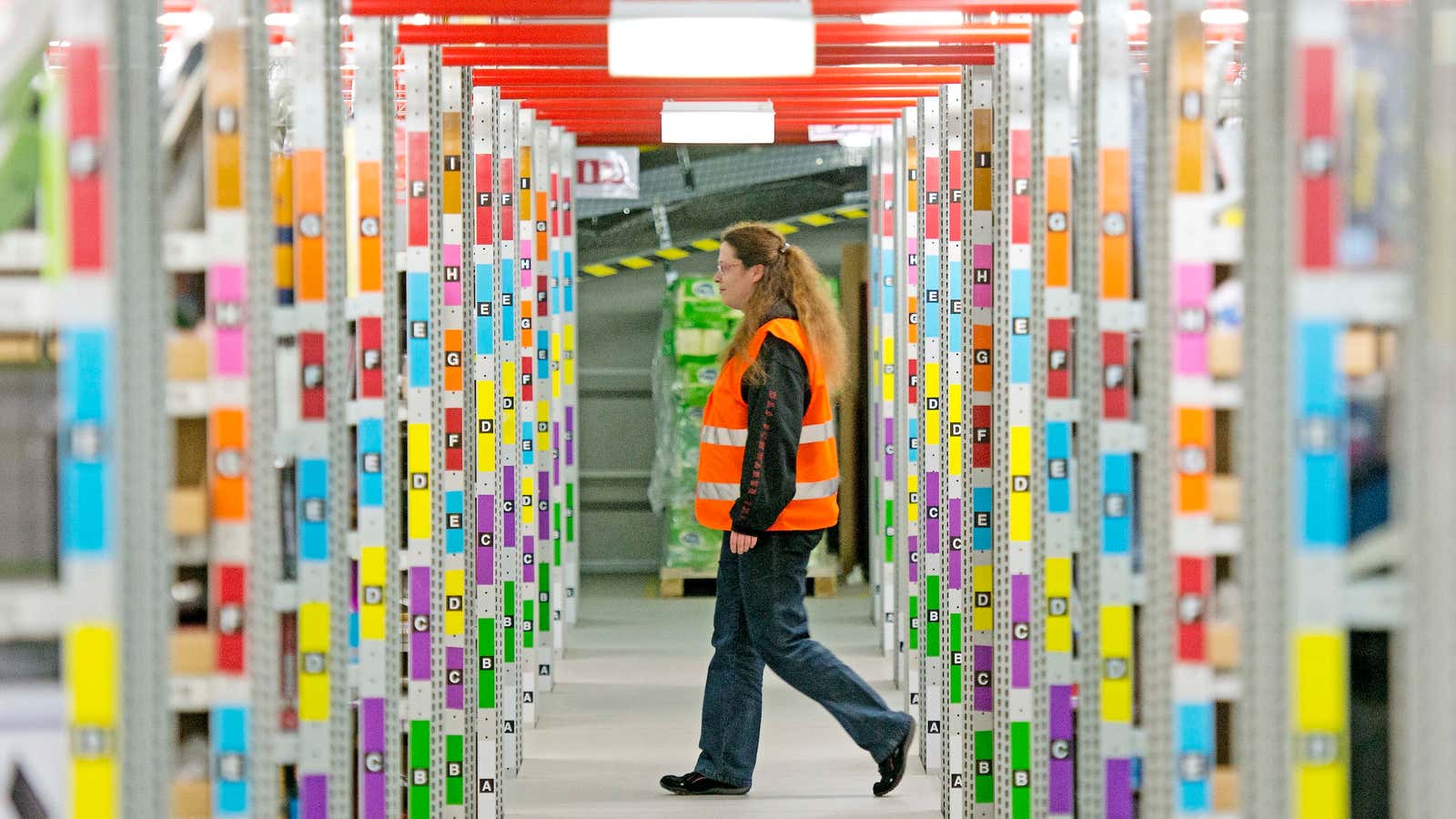Jeff Bezos has some very well-defined opinions and strategies about management, including keeping teams small and being confrontational when needed. That doesn’t mean he’s not up for trying something new.
In his annual shareholder letter, Bezos outlined a few specific initiatives and techniques that the company uses to get the most out of its employees.
Make sure people really want to work for you
One of Bezos’ most interesting ideas is called “pay to quit,” and he borrowed it. It was originally created for new hires at Zappos, the online shoe store Amazon bought in 2009. After employees go through the company’s intense month-long training, they’re offered $2,000 and their pay for the month to quit.
Amazon’s fulfillment centers (the warehouses from which it ships goods) took the idea and pushed further. From Bezos’ letter:
Pay to Quit is pretty simple. Once a year, we offer to pay our associates to quit. The first year the offer is made, it’s for $2,000. Then it goes up one thousand dollars a year until it reaches $5,000. The headline on the offer is “Please Don’t Take This Offer.” We hope they don’t take the offer; we want them to stay. Why do we make this offer? The goal is to encourage folks to take a moment and think about what they really want. In the long-run, an employee staying somewhere they don’t want to be isn’t healthy for the employee or the company
The original program was a one-time offer to new employees. But Amazon believes in the idea of employee buy-in so strongly that it offers serious amounts of money to a very large group of employees every single year.
In the same vein, the company pre-pays 95% of tuition for employees at fulfillment centers to take courses in in-demand fields.
The goal is to enable choice. We know that for some of our fulfillment center employees, Amazon will be a career. For others, Amazon might be a stepping stone on the way to a job somewhere else – a job that may require new skills. If the right training can make the difference, we want to help.
Don’t push people out because they need to work from home
Yahoo controversially limited the ability to work remotely last year. Amazon’s ”Virtual Contact Center,” for people who provide customer service for Amazon.com or the Kindle from home, is now growing faster than any of its physical work sites. It’s active in 10 states now, and the company plans to double that in 2014.
“This flexibility is ideal for many employees who, perhaps because they have young children or for another reason, either cannot or prefer not to work outside the home,” Bezos writes.
It also allows the company to hire from a broader pool of people, some of whom might not otherwise be in the workforce, potentially saving it money and getting it better talent.
Failure can’t be separated from invention
Bezos closes the letter with a some final tips on what lets the company continue to lead. One is that invention comes from everybody, not just senior leaders. A lot of those ideas are going to fail. That’s not a bad thing.
Failure comes part and parcel with invention. It’s not optional. We understand that and believe in failing early and iterating until we get it right. When this process works, it means our failures are relatively small in size (most experiments can start small), and when we hit on something that is really working for customers, we double-down on it with hopes to turn it into an even bigger success. However, it’s not always as clean as that. Inventing is messy, and over time, it’s certain that we’ll fail at some big bets too.
